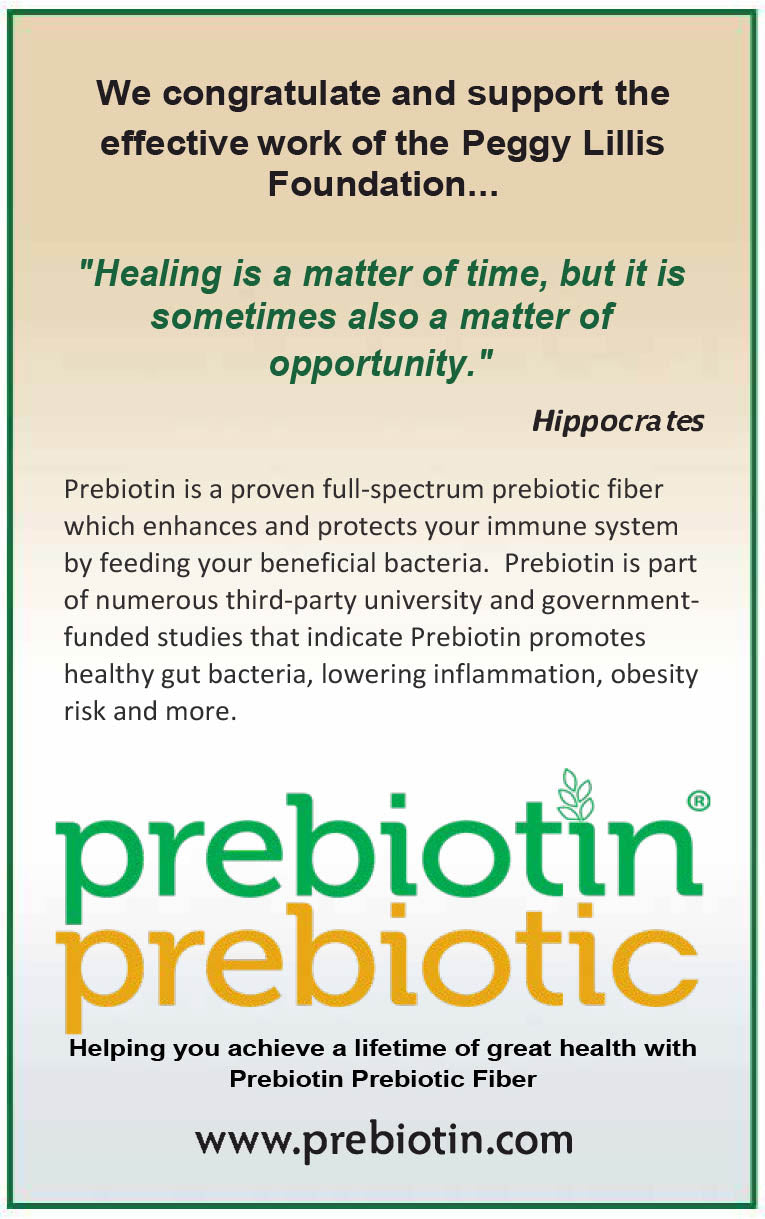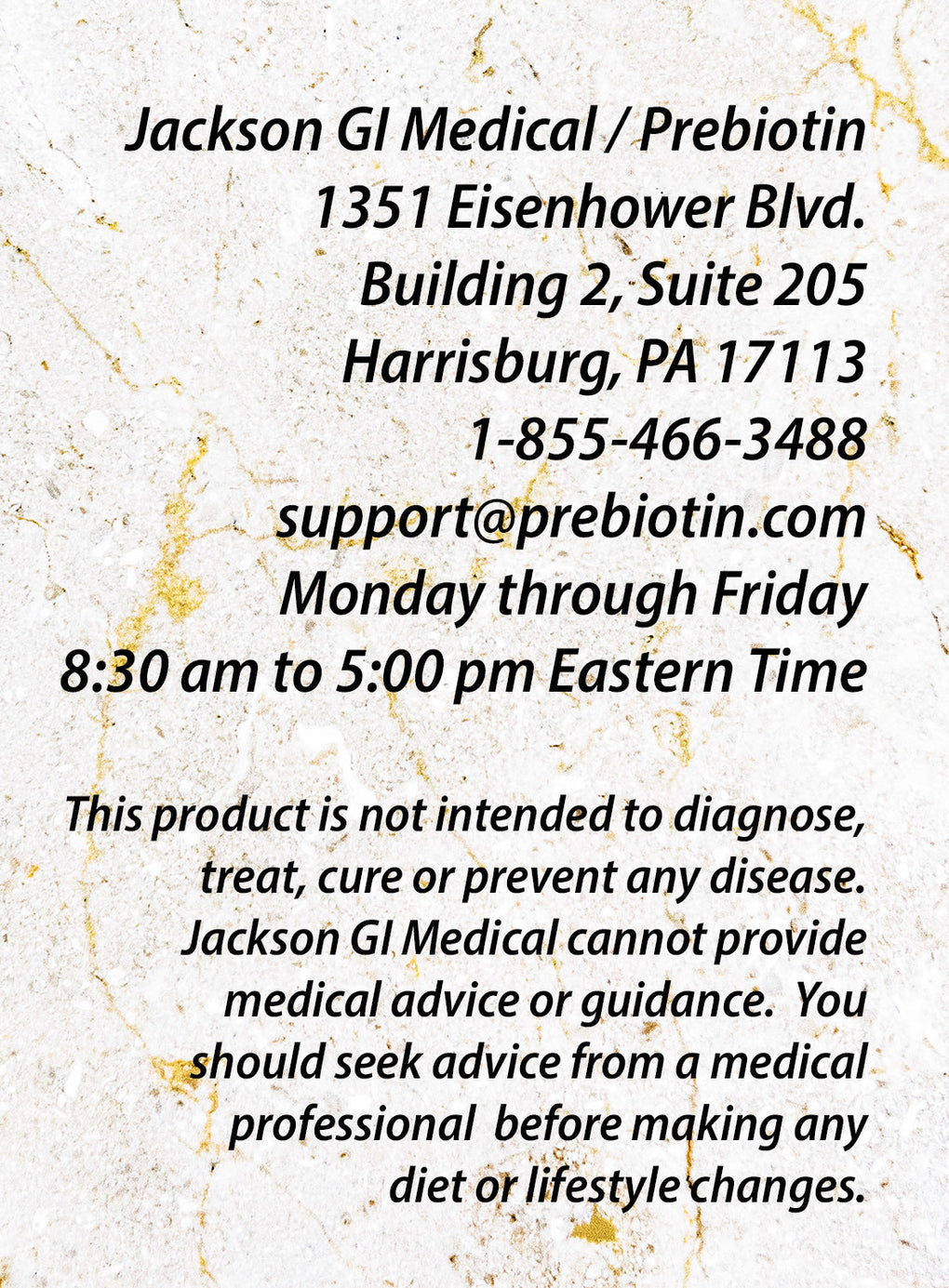What You Should Know About C. Diff and Fecal Transplants

With C. difficile, death can happen unexpectedly and quickly. That was the case with Peggy Lillis, a 56-year-old Brooklyn kindergarten teacher whose death inspired her children, Christian and Liam, to launch the Peggy Lillis Foundation, a national leader in C. difficile education and advocacy.
After a routine root canal followed by standard antibiotic treatment, Peggy developed diarrhea and eventually a massive infection that resulted in septic shock. Because the antibiotics had compromised her microbiome, she had developed C. diff. About 29,000 patients per year die within 30 days of the initial diagnosis of C. difficile from related illnesses. About 500,000 people develop C. diff infections on any given year.
Despite treatment with IV antibiotics and other drugs, and emergency removal of her colon, Peggy Lillis continued to decline. Within a day of her surgery, she developed disseminated intravascular coagulopathy (a pathological process with widespread thrombus or blood clot formation in small vessels) and died, leaving a shocked and devastated family.
In the years since Peggy’s death, physicians are increasingly recognizing and testing for C. diff. Some are willing to recommend FMT as a potential treatment for patients who experience recurrent infection after standard treatment. Since this was the first occurrence of C. diff for Peggy Lillis, fecal microbial transplant would not have been recommended.
Prebiotin supports the important work of the Peggy Lillis Foundation (PLF). For more information about Peggy Lillis and C. diff, please review the Prebiotin Guest blog by Christian John Lillis and Liam Lillis, Co-founders, Peggy Lillis Foundation.
What is C. Diff?
While researchers are exploring FMT’s potential role for treating other gastrointestinal diseases, such as IBS and Crohn’s Disease, FMT is currently only available to treat Clostridium difficile or C. diff, a bacteria that is found throughout the environment in soil, air, water, human and animal feces, and in contaminated food products.
It is common in hospitals and nursing homes, where you can get it from contaminated objects, bedding, and surfaces (bedside tables, door knobs, counters, lavatories, and sinks), from other patients, or from health care workers who have not followed hand washing protocols.
Having had one case of C. diff puts you at risk for another. One in 5 individuals have repeated episodes of the illness. Each episode becomes more virulent and difficult to treat, although even the first episode can be deadly, as was the case with Peggy Lillis.
Up to 20 percent of people who are hospitalized and up to 50 percent of people in long-term care facilities (e.g., nursing homes) carry C. difficile in their feces, although many don’t have symptoms.
Because C. diff can move swiftly, it is one of the deadliest antibiotic-resistant threats in the US, costing the healthcare system nearly $5 billion each year.
Making C. Diff Count!
The Peggy Lillis Foundation is leading a coalition of people, non-profits, and industry partners to increase public reporting of C. diff and other healthcare-associated infections to ensure that every American who suffers and dies from these preventable diseases is counted. For more information, check out the Lillis Foundation website.
Does taking antibiotics put me at risk for C. Difficile?
Normally the intestinal tract contains millions of beneficial bacteria that protect your body from infection. When you take antibiotics, beneficial bacteria as well as the targeted bacteria associated with a specific illness are killed. In this barren environment, often 5-10 days after the antibiotic is stopped, the C. diff bacteria can multiply and colonize the colon, releasing toxins that damage the cells lining the intestinal wall.
You may then experience a range of unpleasant symptoms, from abdominal pain to fever and diarrhea.
Dr. F. Wilson Jackson, Prebiotin Medical Director explains: “We have over 1000 different species of bacteria in our gut, and C. diff is one of them, but it’s normally kept in check by the other bacteria. Antibiotic use can throw the whole balance off.”
Changes in the Microbiome with Antibiotic Use
From CDC’s Antibiotic Resistance (AR) Solutions Initiative:

1. A healthy microbiome helps protect you from infection because your body needs bacteria to function normally. (Pink - disease causing bacteria)
2. When you take antibiotics to treat an infection, the antibiotics not only kill the infection-causing bacteria, but the bacteria that keep you healthy can also be destroyed for several months. This can disrupt, or unbalance, a healthy microbiome.
3. With a disrupted microbiome, the body is less able to defend against infection, putting people at risk for infections from deadly germs like C. difficle and MRSA.
4. When drug-resistant bacteria take over, patients can carry these germs and spread them to other people, especially if those people have a disrupted microbiome.
CDC Antibiotic Resistance Solutions Initiative infographic
Dr. Jackson continues, “As a result, C. difficile has become a major health problem. It is increasingly more common, and some years ago a more virulent strain emerged that made it more refractory to conventional therapy. Recurrent or refractory C. difficile, whereby the patient develops recurrent infection shortly after completing a conventional antibiotic-based treatment, has also become more prevalent.”
Dr. Jackson, MD, is board certified in internal medicine and gastroenterology/hepatology. His practice, Jackson Siegelbaum Gastroenterology, is located in both Camp Hill and Harrisburg, PA.
The son of Prebiotin founder, Dr. Frank Jackson, Dr. F. Wilson Jackson serves as Prebiotin Medical Director and completes many successful fecal microbial transplants as part of his gastroenterology practice.
Is there anything else that can increase my risk for C. diff?
The following factors can increase your risk for C. diff infection:
- Current or recent use of antibiotics
- Current or recent hospitalization
- Older age—the risk of becoming infected with C. diff is 10 times greater in people who are 65 years or older. In 2011, C. difficile was the 17th leading cause of death for people aged 65 years and older
- Having a weakened immune system (for example after chemotherapy)
- Recent infection with C. diff (if you’ve become infected with C. diff, there is increased risk of getting it again)
- Having depression
- Having inflammatory bowel disease (like ulcerative colitis or Crohn’s disease with colitis)
Symptoms
Symptoms from a C. diff infection can become extremely invasive, as well as dangerous. You may experience watery diarrhea (from three to up to 15 times a day in severe cases), high fever, nausea, severe abdominal cramping, dehydration, and loss of appetite. In fatal cases, the bowels can rupture, potentially leading to a body-wide infection (sepsis), organ failure, or even death.
While most cases of C. diff are not fatal, recurring C. diff symptoms can have a major impact on your lifestyle. You may feel stuck at home because of the ongoing diarrhea. You may feel depressed and irritable since other family members and friends may not understand the constant pain and discomfort you experience every day.
Even long after a C. difficile attack is over, you may be one of those individuals who have ongoing food sensitivities and cramping. You may lack energy and stamina for weeks after the attack and have ongoing anxiety about C. diff reoccurring.
And you may worry about passing C. diff to family members, friends, and colleagues.
How to Stop the Spread of C. Diff
Hospitals are beginning to understand that they have a responsibility to control the spread of C. diff. If you are a patient, you can be vigilant about the steps your caregivers are taking to prevent the spread of the illness.
At the Hospital
Among extensive guidelines, the CDC recommends:
- Use antibiotics only when absolutely necessary.
- If you have C. diff, you should be placed in a private room or with another patient who also has C. diff.
- Your caregivers should use gloves and wear gowns in your room or if they provide care.
- If doctors or nurses come directly from another room, they should wash their hands thoroughly with soap and water before they put on their gloves. Alcohol does not kill Clostridium difficile. Therefore, using the hand sanitizer dispenser that many hospitals have in each room isn’t enough to stop the spread of C. diff.
- While you can’t control how your hospital room is cleaned, you or your family may want to ask about the hospital’s procedures to clean and disinfect environmental surfaces and reusable devices, especially items likely to be contaminated with feces and surfaces that are touched frequently. If you would like to check on your hospital’s safety grade (A, B, C, or D), check out the Leapfrog Hospital Safety Grade, the only hospital rating focused exclusively on hospital safety.
- Be aware that bleach is the best way to actually kill C. diff spores.

Hand Sanitizers Don’t Stop C-diff!
The alcohol-based hand sanitizer gels and wipes that are common in hospitals and other institutional settings do not kill C. diff bacteria. Prolonged hand washing is crucial because it washes away C. diff spores.
How You Can Stop the Spread of C. diff at Home
To prevent the spread of C. diff at home:
- Wash your hands often with soap and water, especially after using the bathroom, before preparing food, and before eating. To really get hands clean, wash for 20 seconds—or two verses of the “Happy Birthday” song.
- Only use towels once for drying your hands or use disposable towels.
- Wear disposable gloves if you expect to come into contact with stool, urine, and wound drainage. Wash your hands after removing gloves.
- Frequently clean areas of your home, such as your bathroom, that may become contaminated with C. diff.
- Remember, bleach is the best way to actually kill C. diff spores. You may wish to keep a 32-ounce spray bottle of water containing 2-3 oz. of bleach for quick cleaning of surfaces.
- Change and wash linens on a regular basis, or any time they are soiled.
- Laundry at home should be washed in HOT water and bleach. Just washing will only contaminate the washer and other clothes/linens.
- Also, don’t share drinks or utensils between family and friends. C. diff can be easily transferred this way.
- Notify healthcare providers if you are infected or colonized with C. diff.
Reducing Hospital Onset C. diff by 30%
Health-care associated infections (HAI) like C. diff continue to affect about one in 25 hospital patients, according to the CDC’s National Healthcare Safety Network NHSN) tracking system.
In response, both individual hospitals and national campaigns like the U.S. Department of Health and Human Services (HHS) National Action Plan to Prevent Health Care-Associated Infections: Road Map to Elimination (HAI Action Plan) focus on improved procedures in health care settings.
The 2020 goal to reduce hospital onset C. difficile is 30%.
What if I get C. Diff?
If you become severely ill and are diagnosed with C. diff, then you will be treated in the hospital with both oral and intravenous antibiotics and also fluids to stop dehydration from the diarrhea. Two antibiotics, oral vancomycin and metronidazole, are commonly used if you have a milder case.
However, these treatments have limited success because they fail to correct the dysbiosis (microbial imbalance) in the gut and may even contribute to further dysbiosis.
If the infection becomes life threatening, the doctor may suggest removing your colon. Enter FMT. In the last 10 years, studies have shown that fecal microbial transplants (or FMT) can address even advanced C. difficile infections and other illnesses that affect gut bacteria successfully and promptly. In a review article from Bioscience Horizons that examined 684 patients treated with FMT across 23 independent studies, 90.4% cases of C. diff were resolved.
How Does FMT Work?
FMT involves transplanting carefully screened, processed stool from a healthy donor into your colon. The doctor places the stool product into your body through an enema, colonoscopy, endoscopy or sigmoidoscopy, or with oral capsules. The concept is that your gut microbiome will be able to absorb the healthy gut bacteria from the donor, helping your body to “kick start” your immune system and produce more healthy bacteria.
As beneficial bacteria repopulate the colon, the colonies of C. difficile diminish, and your symptoms will eventually disappear. Research has shown that FMT can be more than 90% effective for the treatment of recurrent C. difficile. In one recent study, C. difficile-associated diarrhea was resolved in 90% of the patients who were treated with FMT. In patients who received the more traditional antibiotic treatment (vancomycin), only 26% got better.
The “ick” Factor
Prebiotin’s Dr. Jackson has had similar success rates. “We began using fecal microbial transplantation about eight years ago and have had very good success, with cure rates of 90%,” says Dr. Jackson.
With this level of success for a procedure around for decades, why don’t more physicians use FMT? According to Dr. Jackson, “Part of it is the ‘ick’ factor. It’s often a tough sell to patients, even though it’s quite effective. Some people are uncomfortable with the idea until they understand the C. diff recovery benefits.”
After having a serious case of C. diff resolve, the parent of one of Dr. Jackson’s first FMT patients had a different take: “We looked right past the ‘ick’ factor and looked at the hope,” says Alan Miller. “We were desperate. After dealing with C. diff that you couldn’t get rid of, what a blessing, what a relief!”
For more personal stories about the experience of contracting C. diff, check out “C. diff can affect anyone” on the Peggy Lillis website.
Stool Banks
As more patients and doctors realize the benefits of FMT, interest in the treatment has grown. The nation’s first and largest stool bank, OpenBiome, opened in 2012 and has sent out nearly 30,000 frozen FMT doses. It was established to expand safe access to FMT doses.
Currently the FDA considers fecal microbiota for FMT an “investigational drug,” a classification that typically requires physicians and scientists to file an Investigational New Drug (IND) application if they intend to use the treatment for clinical practice or research. Because of the success rates associated with FMT, the FDA does allow doctors to provide FMT for patients with C. difficile infections not responding to standard therapies without filing an IND application.
Experts have recommended that the FDA treat stool for FMT as a tissue rather than a drug/biologic, with regulations similar to those for tissue banks that require donor testing and screening and compliance with ‘good manufacturing practices.’ They also urge the FDA to establish or fund a registry for stool banks to report adverse events and data on outcomes.
Open Biome already follows these procedures voluntarily. According to a 2017 article entitled, "Patients Want Poop Transplants. Here's How to Make Them Safe" in Science, physicians at the 968 partner providers track every transplant from product arrival through an eight-week follow-up, before faxing over the data to Open Biome, where it’s entered in a master database. Results are published bi-annually, and adverse events are to be reported to the FDA (although so far, no side effects have been definitively linked to the treatment).
“We looked right past the ‘ick’ factor and looked at the hope…after dealing with C. diff that you couldn’t get rid of, what a blessing; what a relief!” Alan Miller, parent of 42-year-old mentally disabled patient with severe C. difficile that was cured.
How do prebiotics work with FMT?
Since prebiotics have been shown to boost the numbers of beneficial bacteria in the microbiome, crowding out undesirable bacteria, Dr. Jackson uses Prebiotin® Prebiotic Fiber as a way to support patients with C. difficile during the transplant process.
“Our protocol is to place a patient on Prebiotin prior to FMT and then at least three weeks following the procedure,” says Dr. Jackson. “We also add Prebiotin to the FMT slurry at the time of the transplant. Once cured, patients are potentially at risk for another infection if they are exposed to antibiotics in the future. We advise staying on Prebiotin to reduce the likelihood of C. diff recurring.”
As nutritional support for patients with C. diff—and anyone who is concerned about keeping their microbiome healthy—Dr. Jackson recommends a more plant-based diet, with reduction of processed foods. “There are many ways to incorporate healthy eating habits. As a rule, selecting foods on the perimeter of the grocery store—for example fresh fruits and vegetables, unprocessed meats, and fish—will further promote a healthy microflora,” he recommends.
FMT—A “New Treatment” Technique from 1700 Years Ago

Although Western scientists are just beginning to explore the benefits of FMT, writings from a fourth century Chinese researcher described the technique 1700 years ago. According to the History of Fecal Transplant, Liji Thomas, MD, Ge Hong writes about using “yellow soup” to treat patients with severe diarrhea.
From the 17th century on veterans describe using stool, both orally and rectally, to address diarrhea. In a more recent military approach to dysentery, an article in War History Online notes that German soldiers fighting in North Africa during WWII died in large numbers from dysentery until they became aware that local Arabs ate camel dung to combat gastrointestinal issues.
German scientists quickly identified what in the camel dung was responsible for the cures. They discovered Bacillus subtilis, a super-strength bacterium that could devour pathogenic bacteria.
Immediately they grew cultures of the camel poo bacteria and made a broth in large vats to dose the dying soldiers, who got better. Eventually they learned how to dry the bacterium and put it into capsule form, a more palatable means of ingesting the poop.
The first formal published mention of the use of FMT (by enema) for treatment of colitis was by Dr. Ben Eisman in Surgery, in 1958. Dr. Eisman had treated four patients at death’s door with a simple transplant of healthy donor fecal material, when all other treatments failed.
All four patients made a full recovery and were able to leave the hospital within days of the procedure. He and his colleagues reasoned that the original antibiotic treatment had disrupted the delicate ecological balance of the bowels’ resident micro-organisms. Turns out he was right.
Despite these medical successes, it took 20 more years for scientists to discover the value of FMT to treat Clostridium difficile resistant diarrhea.
Is FMT a Possible Treatment If I Have Ulcerative Colitis?
In addition to C. diff, scientists are beginning to study the effectiveness and safety of FMT for other diseases. Dr. Jackson notes, “FMT also shows promise of helping patients with ulcerative colitis and Crohn’s colitis.”
In the most comprehensive study to date on fecal microbiota transplant (FMT) for treating ulcerative colitis, Australian researchers found that while a single FMT infusion may cure a disease like C. diff, multiple FMT infusions over an extended period of time are required to treat ulcerative colitis and decrease the symptoms. Scientists also found that it may be better to use samples from multiple donors, rather than just one.
In the study, about half of the 85 participants received FMT (from multiple sources) followed by an enema 5 days a week for 8 weeks. The second group had the same treatment but received a placebo colonoscopic infusion.
The authors report in Lancet: “The primary outcome was achieved in 11 (27%) of 41 patients allocated faecal microbiota transplantation versus three (8%) of 40 who were assigned placebo… Microbial diversity increased with and persisted after faecal microbiota transplantation.”
A Revolution in Medicine
Researchers are documenting the impact of FMT on conditions like C. diff and ulcerative colitis as part of a growing body of scientific research that is focusing on treating disease by changing the makeup of the microbiome.
Dr. Jackson hales these advances as the beginning of a revolution in medicine. “Better understanding of the interplay between the microbiome and our health will enable us to educate the medical community and impact patient care, since it is likely that the ability to test the microbiome will become more common and accessible to the point-of-care between the physician and patient.
“With the recent development of the ability to study the organisms and their DNA that make up the microbiome, we are at the beginning of what may prove a revolution in disease and health management.”

Prebiotin has supported the Peggy Lillis Foundation Annual Gala fundraiser for five years because we believe their work is crucial to raising awareness about the impact of C. diff, empowering advocates, and shaping policy. FMT is a valuable approach to reach the Peggy Lillis Foundation (PLF) vision of making C. diff rare, treatable, and survivable. For more information about FMT, please review Dr. Jackson’s interview with Christian John Lillis, PLF Executive Director, on the Peggy Lillis Foundation website.
Do you have a C. diff story? We want to help…
We are offering a Free One Month’s Supply for you if you currently have or had C. diff. Research has shown that Prebiotin can rebuild beneficial bacteria colonies that may eventually crowd out undesirable bacteria—like C. diff.
In fact, Prebiotin Medical Director Dr. F. Wilson Jackson recommends that C. diff patients stay on Prebiotin after treatment to reduce the likelihood of C. diff recurring.
If you are ready to improve your balance of bacteria and strengthen your immune system, contact us through our contact form. Tell us your C. diff story. We’ll send you enough Prebiotin for one month. After your trial period, let us know how you are doing. If you wish to order Prebiotin, we will offer you a discount. (However, no additional orders are required for the free one-month trial offer.)
Prebiotin® is not intended to treat, cure, or prevent any disease. This website does not diagnose illnesses. Please check with your health care provider to discuss changes in your diet and the addition of supplements like Prebiotin.
References
- Body and Mind Staff, “Fecal transplant helps patient overcome hard-to-treat C. diff infection,” Penn Live. Posted Jan 23, 201.
- Cammarota G, Masucci L, Ianiro G, et al. Randomised clinical trial: faecal microbiota transplantation by colonoscopy vs. vancomycin for the treatment of recurrent Clostridium difficile infection. Aliment Pharmacol Ther. 2015 May;41(9):835-43. doi: 10.1111/apt.13144. Epub 2015 Mar 1.
- CDC. Frequently Asked Questions about Clostridium difficile for Healthcare Providers.” Last updated: March 6, 2012.
- CDC Press Release. "Nearly half a million Americans suffered from Clostridium difficile infections in a single year.” Last reviewed March 22, 2017.
- Dowle C. Faecal microbiota transplantation: a review of FMT as an alternative treatment for Clostridium difficile infection. Bioscience Horizons: The International Journal of Student Research. 2016 January; 9(1):hzw007. .
- Eisman B, et al. Fecal enema as an adjunct in the treatment of pseudomembranous enterocolitis. Surgery. 1958 Nov;44(5):854-9.
- Gut Microbiota for Health. “Gut Microbiota Info.” Accessed 10-11-18.
- Hoffman D., et al. Improving regulation of microbiota transplants. Science. 15 Dec 2017; 358 (6369): 1390-1391. DOI: 10.1126/science.aaq003.
- Edmond MB. The Power of Poop: Fecal Microbiota Transplantation for Clostridium Difficile Infection. Trans Am Clin Climatol Assoc. 2016; 127: 71–80.
- Mayo Clinic, Clinical Updates. “FMT demonstrates consistently high success rates for recurrent CDI.” Accessed October 12, 2018.
- McCormick, Jinny, “German Soldiers Forced to Eat Poop to Cure Dysentery Outbreak,” War History Online. Jan 15, 2016.
- McKenna, Maryn. “CDC Threat Report: ‘We Will Soon Be In A Post-Antibiotic Era’,” Science, Sept. 16, 2013.
- Molteni, M. “Patients want poop transplants. Here’s how to make them safe.” Wired, December 14, 2017.
- Office of Disease Prevent and Health Promotion. “National Action Plan to Prevent Health Care-Associated Infections: Road Map to Elimination.” Last updated: 10-30-18.
- Open Biome. “FMT Evidence.” Accessed 10-10-18.
- Open Biome. “Regulatory: Our public letter on the FDA’s recent workshop on micro-biome based therapies.” Accessed10-12-18.
- Paramsothy D, Kamm MA, Kaakoush NO, et al. Multidonor Intensive Faecal microbiota transplantation for active ulcerative colitis: a randomized placebo-controlled trial. The Lancet. 25 March, 2017; 389(10075): 1218-1228.
- Peggy Lillis Foundation. “C. Diff and its impact on Our Aging Population.” Nov. 1, 2016.
- Peggy Lillis Foundation. “Guest Blog: Hand Hygiene 2017: Policy Lags Behind Science.” June 1, 2017.
- Peggy Lillis Foundation. “Why Should I Care.” 2018.
- Thomas, Liji, MD, “History of Fecal Transplant,” News Medical Life Sciences. Last Updated: Aug 23, 2018.
- UpToDate®. What is C. Difficile? Lit review updated September 2018.
Additional Resources
- The Fecal Transplant Foundation – Moderated by Catherine Duff, TFTF’s founder, this group provides support for patients and caregivers pursuing or having had a fecal transplant.






